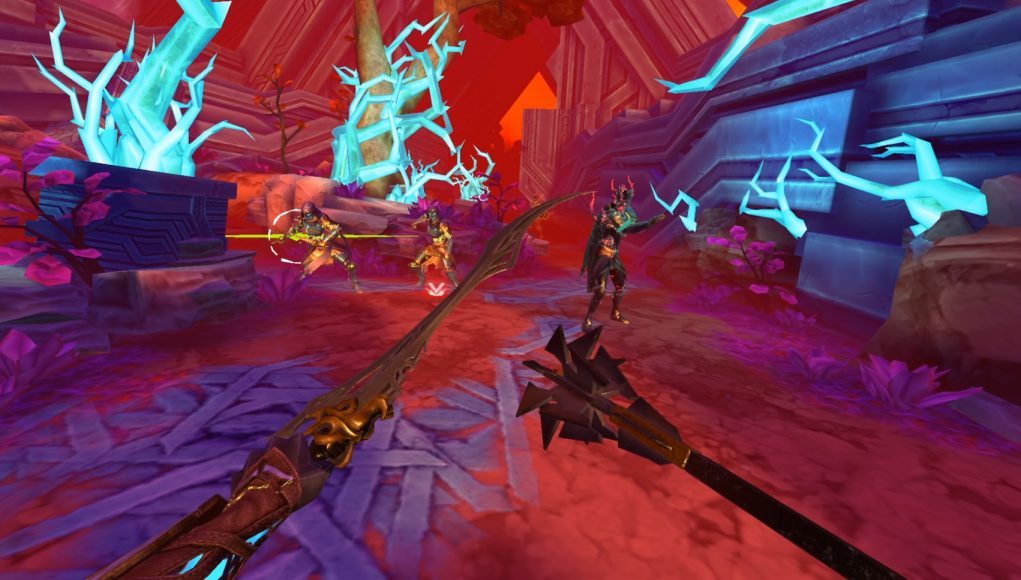Until You Fall brings a refreshingly unique approach to VR sword fighting which combines the satisfaction of a hack & slash game with the depth of RPG combat, all wrapped up in a VR-native design. The game’s Quest port is a near-perfect translation from its PC counterpart which benefits from the lack of tether.
Until You Fall Details:
Available On: Oculus Quest, Oculus PC, SteamVR, PSVR
Release Date: September 29th, 2020
Price: $25
Oculus Cross-buy: Yes
Developer: Schell Games
Reviewed On: Quest
Gameplay
Until You Fall is a rogue-lite VR melee combat game where you battle your way through rooms of enemies until you are inevitably struck down, only to rise again more experienced and more powerful to try to make it even further in your next bout.
Rather than the purely physics-based approach of a VR melee combat game like Blade & Sorcery, Until You Fall delivers a somewhat more abstract experience. From the outside, the ‘block’ and ‘combo’ markers might make the game look arcade-ish, but there’s heaps of depth hiding underneath. Not only does this approach leave room for meta-game strategy—like which weapons you use and how you use them—it also allows the game to carefully set the ‘pace’ of combat to make it both challenging and rewarding without the intermittent funkiness that often comes with a pure-physics approach.
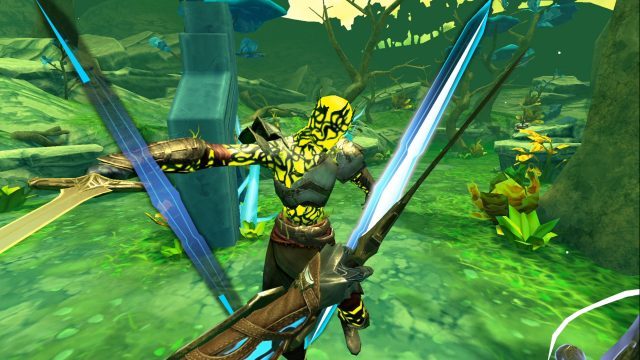
Make no mistake though, Until You Fall is an active game and you can easily build up a sweat while you play. Although hits and blocks are more dependant on the overall gesture than ensuring that you make perfect contact with the enemy’s hitbox, to succeed you’ll still need to make big swings in the right directions and at the right time.
Until You Fall’s combat is wholly dictated by the ‘shield’ meter of each enemy, which must be broken before you can begin slashing away at their health bar. Shield damage is dealt both by hitting enemies and blocking their attacks. Since they can attack you at any time while their shield is up, you can get a few hits in here and there but you’ll largely be on the defensive until their shield is down. Once their shield is broken it’s your turn to dish out big damage by swinging in the indicated direction to chain together several devastating hits. Some enemies will die after just one combo set, but others will need their shields taken down multiple times before they fall—until you become more powerful, that is.
Until You Fall has two types of progression: temporary upgrades which you unlock in the current run but disappear afterward, and permanent upgrades to your weapons which are bought between runs in the hub area. In addition to upgrading your weapons, you can also buy from a reasonably large selection of new weapons. But your effectiveness is also dictated by the proficiency of your play rather than by your stats alone.
Each weapon has its own unique characteristics, and choosing which weapons you bring into battle is a very meaningful decision because it can have a drastic impact on how you play—from your overall combat strategy right down to the way you swing.
This is the heart of what makes Until You Fall’s combat so interesting. In one run you might choose a dagger for your blocking weapon—because it’s light and fast—and an axe for your attacking weapon—because it deals big damage. In the next run you might pair a broadsword—for its balance of range and speed—with an amulet—which gives big stat boosts but can’t be used to block. Or you might want to attack with two daggers—for their speed—and hope to find the mid-run upgrade which increases damage when you alternate attacks between your blades.
On one of my better runs in the Quest version of Until You Fall I chose the mace for dishing out big shield damage, but opted to block and combo with my broadsword because the mace is too slow for quick blocks and the broadsword does more damage to health than shields. As I fought through the run I grabbed a few mid-run upgrades which made my mace deal even more shield damage, turning it into a brute-force shield smasher that I would swing with abandon while focusing on precise blocking and combos with my sword.
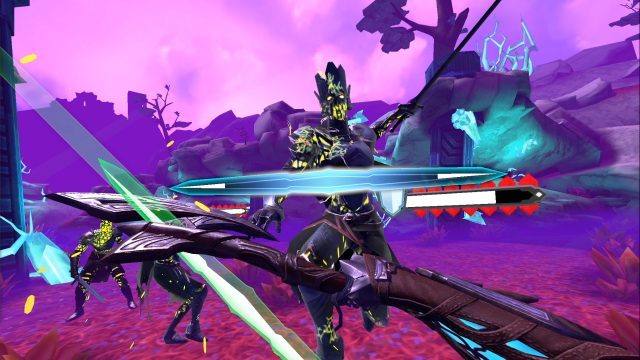
That’s just one idea for a weapon pairing and combat strategy, and there’s many more to formulate, experiment with, and perfect.
It takes some time to grasp all the systems at play though, and this is one place where Until You Fall could use some added clarity. Sorting out the difference between permanent and temporary weapon bonuses, player bonuses, weapon sockets, block damage, shield damage, and health damage will take some back-and-forth comparisons between menus and getting a few runs under your belt. Revamping the interface to more clearly indicate which upgrades are temporary and which are permanent (and whether the upgrade applies to the player or the weapon) would help players get up to speed with the underlying systems more quickly. The game would also benefit from more explicitly explaining that each weapon has differing ‘physical’ weight which impacts how fast it moves. That’s an important consideration when it comes to choosing your kit and how you’ll use it.
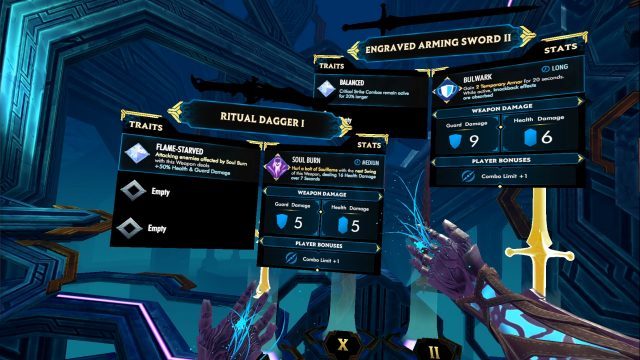
Though a bit hazy at the outset, the meta-game elements are paired with satisfying and challenging moment-to-moment combat that will test your mettle and leave you with that feeling of wanting to squeeze in just one more run.
Runs start out easy enough and after upgrading your weapons a few times you’ll be crushing the fodder with a single swing. But with just a few non-regenerating hit points, every enemy is a potential threat. Getting cocky and overextending is the surest way to lose a hitpoint, and you’ll be kicking yourself later when you have to give up a crucial mid-run weapon upgrade to recover your hit points instead.
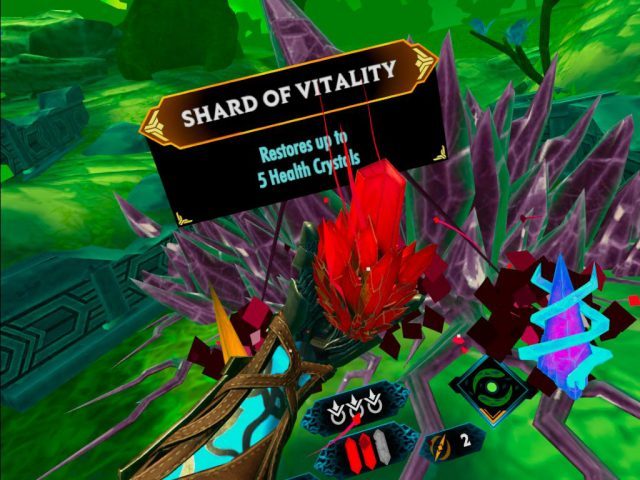
And then there’s the real enemies. As you go deeper through your run you’ll start facing off against Knights and Captains which each present a serious threat. And just when you start to master those encounters you’ll start facing off with empowered versions of those enemies which bring amped-up attacks that will have you on your heels in a heartbeat if you aren’t lock-step with their attacks. Narrowly escaping one of these challenging encounters with a single hit point is a thrilling experience—the essence of Until You Fall.
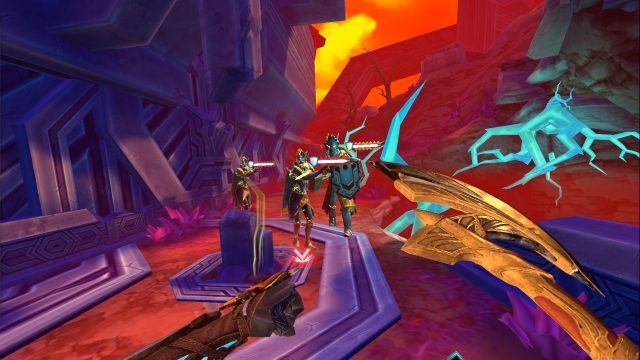
Although there’s some structure to your runs in Until You Fall, including a few boss encounters along the way, there isn’t really a definitive ‘end’ to the game. Even once you vanquish the most difficult encounter, there’s always new weapon combos and combat strategies to try and harder difficulties to master. That said, I think players could expect to spend around 10 hours becoming proficient enough to conquer the final encounter.
Immersion
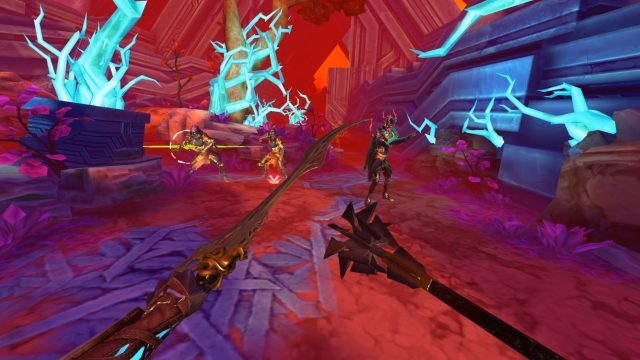
Until You Fall for Quest is a superb port of its PC counterpart. While there are some graphical downgrades, the heart and soul of the gameplay and visuals remain entirely intact.
Although the ground texture could use some work and the foliage has become sparse and chunky, the most interesting objects in the game—namely your hands, weapons, and upgrade crystals—retain an impressive amount of geometric detail and much of the lighting sheen that keeps them from the ‘cardboard’ look that we’ve seen with some Quest ports. Generally speaking, the game seems to look better in motion through the headset than I’ve been able to capture with screenshots, likely because the in-game visuals are so crisp and well defined compared to some games which use blurry anti-aliasing (or lack it outright).
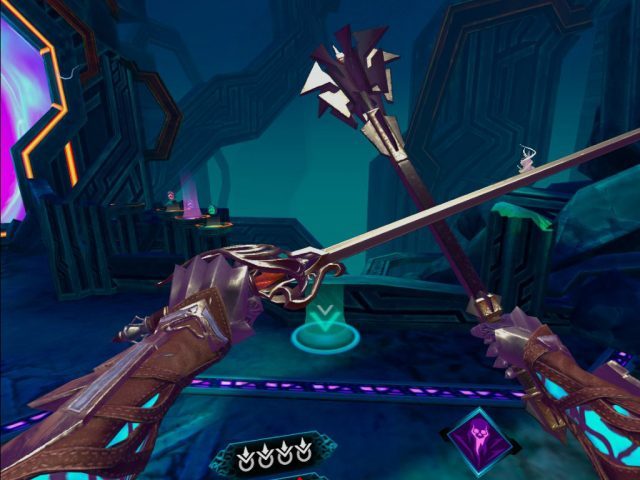
Although the game’s many particle effects aren’t nearly as complex what’s seen in the PC version, they’ve been tastefully replaced with thicker, ribbon and pedal-like particles that feel perfectly at home in the game’s imaginative neon art style.
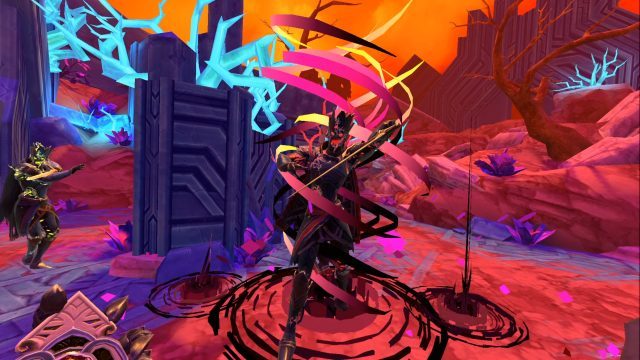
With carefully adapted visuals backed by strong sound design and quality music, there’s almost nothing lost in the Quest port of Until You Fall—except for the tether. Being unbounded by a cable doesn’t radically change the game, but it adds immersion by allowing you to rotate your body to face enemies with no fear of a cord twisting below your feet or getting in the way of your strikes.
Immersion in Until You Fall comes more from how it feels than how it looks. Summoning your weapons into your hands before a battle by squeezing both grip buttons—accompanied by a satisfying ‘shwiiinng‘ sound—never seems to get old. Nor does the feeling of defly slicing through a combo sequence and watching the enemy collapse in a ragdoll heap.
It may not feel like you need to fear the precise geometric boundary of the enemy’s blade, but there’s something to be said about a game where you unconsciously take stock of the challenge before you when coming face to face with its toughest enemies.
What is here, for the most part, is superbly executed. So well, in fact, that Until You Fall’s biggest ‘flaw’ is what’s it doesn’t have. The strategic depth and moment-to-moment satisfaction of the combat system leave the game screaming for a larger scope, a more dynamic world, and a proper story.
Comfort
Until You Fall is an active game that’s generally comfortable and has well-rounded comfort options. Players are prompted from the outset to choose between seated and standing modes. Vignetting is on by default and can be reduced or disabled outright. I turned it off for the sake of immersion and didn’t have any discomfort.
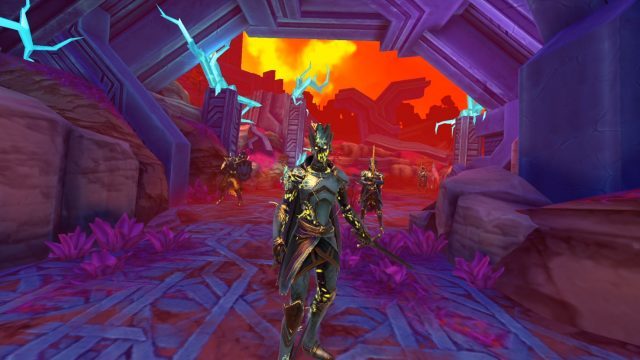
Although there’s some smooth stick movement, it’s kept quite slow because the game smartly brings enemies toward you and asks you to use your weapons and bodily movements to block and dodge rather than strafing around with a thumbstick. Dashing is used to get around more quickly, but a cooldown prevents players from exploiting it for constant locomotion.
Until You Fall can be a workout if you really get into it. The game rewards physical effort by dealing more damage for broad swings and allowing players to block any attack as long as they can physically get their hand into blocking position with enough time to spare. Dodging left/right and ducking are required for some encounters, but the movement threshold is low enough that it can be done while seated.

